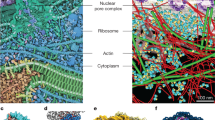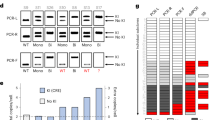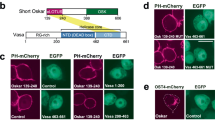Abstract
Cell-free gene expression systems are biotechnological tools for the in vitro production of proteins of interest. The addition of membrane vesicles (liposomes) enables the production of membrane proteins, including those in large-molecular-weight complexes, such as the SecYEG translocon or ATP synthase. Here we describe a protocol for the cell-free synthesis of membrane proteins using the protein synthesis using recombinant elements (PURE) system, and for subsequent quantification of products and analyses of membrane localization efficiency, product orientation in the membrane and complex formation in the membrane. In addition, measurements of ATP synthase activity are used as an example to demonstrate the functional nature of the cell-free synthesized proteins. This protocol allows the rapid production and the detailed analysis of membrane proteins, and the complete process from template DNA preparation to activity measurement can be accomplished within 1 d. In contrast to alternative methods using living cells, this protocol can also help to prevent the difficulties in membrane protein purification and the risks of protein aggregation during reconstitution into lipid membranes.
This is a preview of subscription content, access via your institution
Access options
Subscribe to this journal
Receive 12 print issues and online access
$259.00 per year
only $21.58 per issue
Buy this article
- Purchase on Springer Link
- Instant access to full article PDF
Prices may be subject to local taxes which are calculated during checkout




Similar content being viewed by others
Change history
06 January 2016
In the version of this article initially published, the units for concentration of the FD component listed in Table 1 are incorrect. The correct unit should be µg/ml. The spelling of the 'PUREflex' kit was also incorrect and has been changed to PUREfrex throughout. These errors have been corrected in the HTML and PDF versions of the article.
References
Swartz, J. Developing cell-free biology for industrial applications. J. Ind. Microbiol. Biotechnol. 33, 476–485 (2006).
Terada, T., Murata, T., Shirouzu, M. & Yokoyama, S. Cell-free expression of protein complexes for structural biology. Methods Mol. Biol. 1091, 151–159 (2014).
Takai, K., Sawasaki, T. & Endo, Y. Practical cell-free protein synthesis system using purified wheat embryos. Nat. Protoc. 5, 227–238 (2010).
Jackson, R.J. & Hunt, T. Preparation and use of nuclease-treated rabbit reticulocyte lysates for the translation of eukaryotic messenger RNA. Methods Enzymol. 96, 50–74 (1983).
Ezure, T., Suzuki, T., Shikata, M., Ito, M. & Ando, E. A cell-free protein synthesis system from insect cells. Methods Mol. Biol. 607, 31–42 (2010).
Mikami, S., Kobayashi, T., Masutani, M., Yokoyama, S. & Imataka, H. A human cell-derived in vitro coupled transcription/translation system optimized for production of recombinant proteins. Protein Expr. Purif. 62, 190–198 (2008).
Carlson, E.D., Gan, R., Hodgman, C.E. & Jewett, M.C. Cell-free protein synthesis: applications come of age. Biotechnol. Adv. 30, 1185–1194 (2012).
Shimizu, Y. et al. Cell-free translation reconstituted with purified components. Nat. Biotechnol. 19, 751–755 (2001).
Shimizu, Y., Kanamori, T. & Ueda, T. Protein synthesis by pure translation systems. Methods 36, 299–304 (2005).
Kuruma, Y., Stano, P., Ueda, T. & Luisi, P.L. A synthetic biology approach to the construction of membrane proteins in semi-synthetic minimal cells. Biochim. Biophys. Acta 1788, 567–574 (2009).
Kuruma, Y., Suzuki, T., Ono, S., Yoshida, M. & Ueda, T. Functional analysis of membranous Fo-a subunit of F1Fo-ATP synthase by in vitro protein synthesis. Biochem. J. 442, 631–638 (2012).
Ozaki, Y., Suzuki, T., Kuruma, Y., Ueda, T. & Yoshida, M. UncI protein can mediate ring-assembly of c-subunits of FoF1-ATP synthase in vitro. Biochem. Biophys. Res. Commun. 367, 663–666 (2008).
Noireaux, V. & Libchaber, A. A vesicle bioreactor as a step toward an artificial cell assembly. Proc. Natl. Acad. Sci. USA 101, 17669–17674 (2004).
Kalmbach, R. et al. Functional cell-free synthesis of a seven helix membrane protein: in situ insertion of bacteriorhodopsin into liposomes. J. Mol. Biol. 371, 639–648 (2007).
Soga, H. et al. In vitro membrane protein synthesis inside cell-sized vesicles reveals the dependence of membrane protein integration on vesicle volume. ACS Synth. Biol. 3, 372–379 (2014).
Matsubayashi, H., Kuruma, Y. & Ueda, T. In vitro synthesis of E. coli Sec translocon from DNA. Angew. Chem. Int. Ed. 53, 7535–7538 (2014).
Kuruma, Y., Suzuki, T. & Ueda, T. Production of multi-subunit complexes on liposome through an E. coli cell-free expression system. Methods Mol. Biol. 607, 161–171 (2010).
Niwa, T. et al. Bimodal protein solubility distribution revealed by an aggregation analysis of the entire ensemble of Escherichia coli proteins. Proc. Natl. Acad. Sci. USA 106, 4201–4206 (2009).
Soga, N., Kinosita, K. Jr., Yoshida, M. & Suzuki, T. Efficient ATP synthesis by thermophilic Bacillus FoF1-ATP synthase. FEBS J. 278, 2647–2654 (2011).
Ohashi, H., Shimizu, Y., Ying, B.W. & Ueda, T. Efficient protein selection based on ribosome display system with purified components. Biochem. Biophys. Res. Commun. 352, 270–276 (2007).
Shimizu, Y., Kuruma, Y., Kanamori, T. & Ueda, T. The PURE system for protein production. Methods Mol. Biol. 1118, 275–284 (2014).
Fujii, S. et al. Liposome display for in vitro selection and evolution of membrane proteins. Nat. Protoc. 9, 1578–1591 (2014).
Fujiwara, K., Katayama, T. & Nomura, S.M. Cooperative working of bacterial chromosome replication proteins generated by a reconstituted protein expression system. Nucleic Acids Res. 41, 7176–7183 (2013).
Asahara, H. & Chong, S. In vitro genetic reconstruction of bacterial transcription initiation by coupled synthesis and detection of RNA polymerase holoenzyme. Nucleic Acids Res. 38, e141 (2010).
Chizzolini, F., Forlin, M., Cecchi, D. & Mansy, S.S. Gene position more strongly influences cell-free protein expression from operons than T7 transcriptional promoter strength. ACS Synth. Biol. 3, 363–371 (2014).
Schuler, M.A., Denisov, I.G. & Sligar, S.G. Nanodiscs as a new tool to examine lipid-protein interactions. Methods Mol. Biol. 974, 415–433 (2013).
du Plessis, D.J., Nouwen, N. & Driessen, A.J. The Sec translocase. Biochim. Biophys. Acta 1808, 851–865 (2011).
Kedrov, A., Kusters, I., Krasnikov, V.V. & Driessen, A.J. A single copy of SecYEG is sufficient for preprotein translocation. EMBO J. 30, 4387–4397 (2011).
Schagger, H. & von Jagow, G. Blue native electrophoresis for isolation of membrane protein complexes in enzymatically active form. Anal. Biochem. 199, 223–231 (1991).
Fillingame, R.H., Jiang, W. & Dmitriev, O.Y. Coupling H+ transport to rotary catalysis in F-type ATP synthases: structure and organization of the transmembrane rotary motor. J. Exp. Biol. 203, 9–17 (2000).
Mitome, N., Suzuki, T., Hayashi, S. & Yoshida, M. Thermophilic ATP synthase has a decamer c-ring: indication of noninteger 10:3 H+/ATP ratio and permissive elastic coupling. Proc. Natl. Acad. Sci. USA 101, 12159–12164 (2004).
Diez, M. et al. Proton-powered subunit rotation in single membrane-bound FoF1-ATP synthase. Nat. Struct. Mol. Biol. 11, 135–141 (2004).
Aggeler, R., Ogilvie, I. & Capaldi, R.A. Rotation of a γ-ɛ subunit domain in the Escherichia coli F1F0-ATP synthase complex. The gamma-epsilon subunits are essentially randomly distributed relative to the α3β3δ domain in the intact complex. J. Biol. Chem. 272, 19621–19624 (1997).
Shimizu, Y. & Ueda, T. PURE technology. Methods Mol. Biol. 607, 11–21 (2010).
Green, M.R. & Sambrook, J. Molecular Cloning: A Laboratory Manual 4th edn. (Cold Spring Harbor Laboratory Press, 2012).
Veenendaal, A.K., van der Does, C. & Driessen, A.J. The protein-conducting channel SecYEG. Biochim. Biophys. Acta 1694, 81–95 (2004).
Weber, J. ATP synthase: subunit-subunit interactions in the stator stalk. Biochim. Biophys. Acta 1757, 1162–1170 (2006).
Suzuki, T. et al. FoF1-ATPase/synthase is geared to the synthesis mode by conformational rearrangement of epsilon subunit in response to proton motive force and ADP/ATP balance. J. Biol. Chem. 278, 46840–46846 (2003).
Acknowledgements
This work was supported by Grants-in-Aid for Scientific Research on Innovative Areas (grant numbers 26119704 and 26103511 to Y.K.) and the Platform for Drug Discovery, Informatics, and Structural Life Science from the Ministry of Education, Culture, Sports, Science and Technology, to T.U. We thank T. Suzuki of Waseda University for valuable advice about FoF1-ATP synthase, H. Matsubayashi for the SecYEG translocon data and T. Kanamori of GeneFrontier for providing the PURE system.
Author information
Authors and Affiliations
Contributions
Y.K. developed the methods presented in this study, and validated the protocol, wrote the manuscript and prepared the figures. T.U. supervised all of the work and prepared the final version of the manuscript.
Corresponding author
Ethics declarations
Competing interests
The authors declare no competing financial interests.
Rights and permissions
About this article
Cite this article
Kuruma, Y., Ueda, T. The PURE system for the cell-free synthesis of membrane proteins. Nat Protoc 10, 1328–1344 (2015). https://doi.org/10.1038/nprot.2015.082
Published:
Issue Date:
DOI: https://doi.org/10.1038/nprot.2015.082
Comments
By submitting a comment you agree to abide by our Terms and Community Guidelines. If you find something abusive or that does not comply with our terms or guidelines please flag it as inappropriate.



